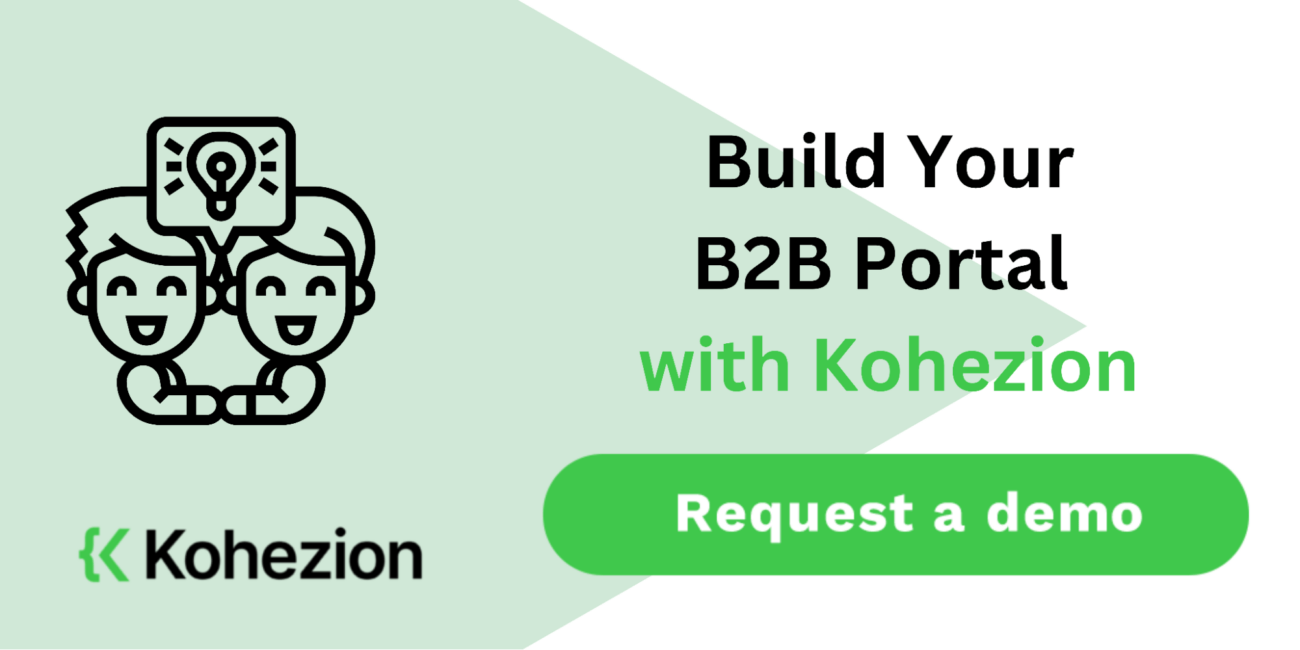According to Gartner, 80% of all B2B sales will happen online by 2025. This is a big change in how businesses sell. Already, two-thirds of B2B companies sell online. The global B2B e-commerce market is expected to hit $18,771.4 billion by 2027.
The move to online sales is not just a trend—it's a big deal. Online sales are now as good as in-person sales and even better than phone and email sales.
In this post, you’ll learn everything you need to know about B2B portal development and its benefits for your business.
What is B2B Portal Development?
A B2B portal is an online space for businesses to interact and do business with each other. It is a central hub for ordering, invoicing, and customer service. Unlike consumer sites, B2B portals help businesses meet their needs, improving their online collaboration.
Creating a B2B portal can make a company's operations more efficient. It can automate tasks, reduce mistakes, and eliminate paperwork, saving businesses up to 50% on costs. About two-thirds of B2B companies already sell online, showing the importance of these platforms.
B2B portals can connect with systems like ERP and CRM, making operations smoother and giving a full view of the business process. Investing in a B2B portal can help your company reach more people and make buying easier, leading to happier customers.
Types of B2B Portals
B2B portals vary, each designed for different business needs. Knowing the types can help you pick the best for your operations and user experience.
Customer Portal
A customer portal lets clients see their orders, invoices, and support anytime. It tracks orders and helps submit questions easily, improving customer experience. A good customer portal helps keep customers coming back.
eCommerce Portal
An eCommerce portal is like an online store for businesses. It helps manage sales and build customer relationships. It makes shopping easy for customers.
Vendor Portal
A vendor portal helps suppliers manage their products and orders. It also makes it easier to work with suppliers, cutting costs and improving efficiency. It's all about better collaboration and workflow.
Distributor Portal
Distributor portals improve communication and order handling between manufacturers and distributors. They offer a place to show products and manage inventory. A strong distributor portal helps grow business relationships and partnerships.
Employee Self-Service Portal
An employee self-service portal lets staff access HR info like benefits and payroll. It makes HR's job easier and keeps employees happy. It's all about better communication and less work for HR.
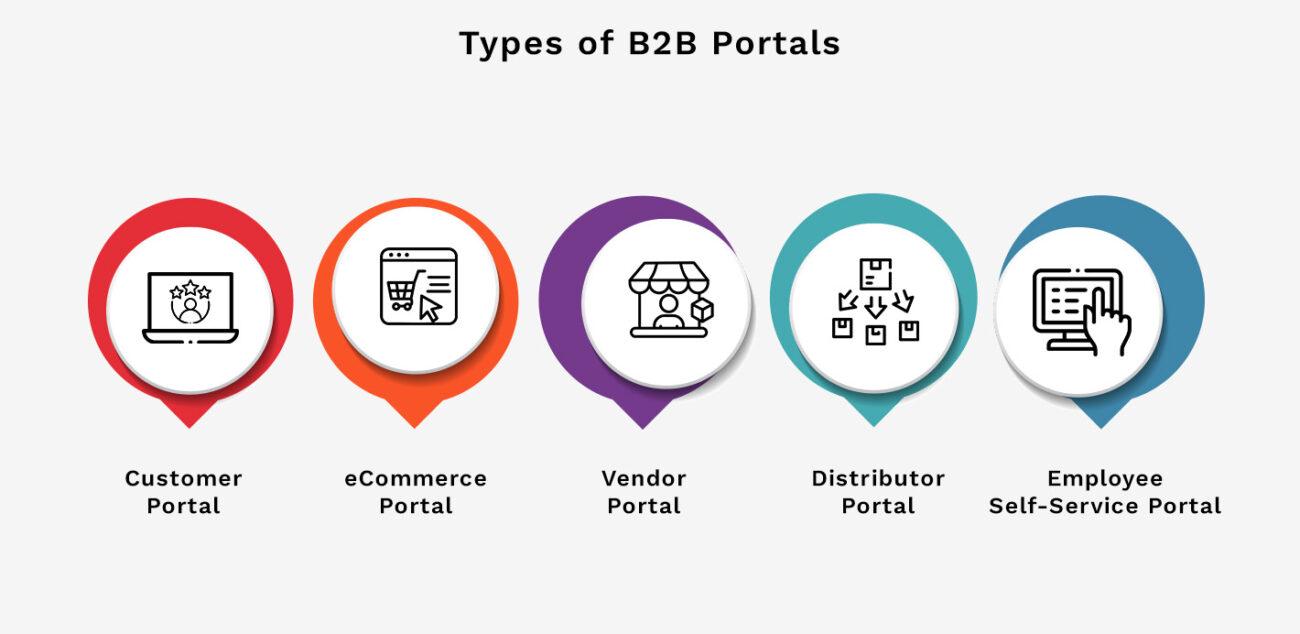
Benefits of B2B Portal Development
Looking into B2B portal development shows many benefits for your business. Moving to digital platforms increases efficiency and saves money. Here's how these portals can change your business for the better.
Improved Operational Efficiency
A B2B portal automates tasks like order management and invoicing. This makes things more accurate and cuts down on manual work. Your team can then focus on more important tasks.
Cost Saving
Using B2B portals can save you a lot of money. They reduce paperwork and make communication smoother. Automation also lowers labor costs, making your resources go further.
Increased Brand Awareness
A B2B portal improves your brand's online presence, makes it easier for customers to find you, and improves your brand's image and credibility.
More Customers and Leads
B2B portals offer tools for attracting new customers and keeping current ones happy. They help build stronger relationships and grow businesses.
Cost-Effective Marketing
Digital marketing is well-suited to B2B portals. It offers good results at a lower cost and makes marketing more affordable and effective.
Scalability
B2B portals grow with your business. They're flexible, allowing your operations to expand without investing in new systems.
Competitive Advantage
A well-made B2B portal gives you an edge over competitors. It improves customer service and efficiency. This makes your company a leader in your field.
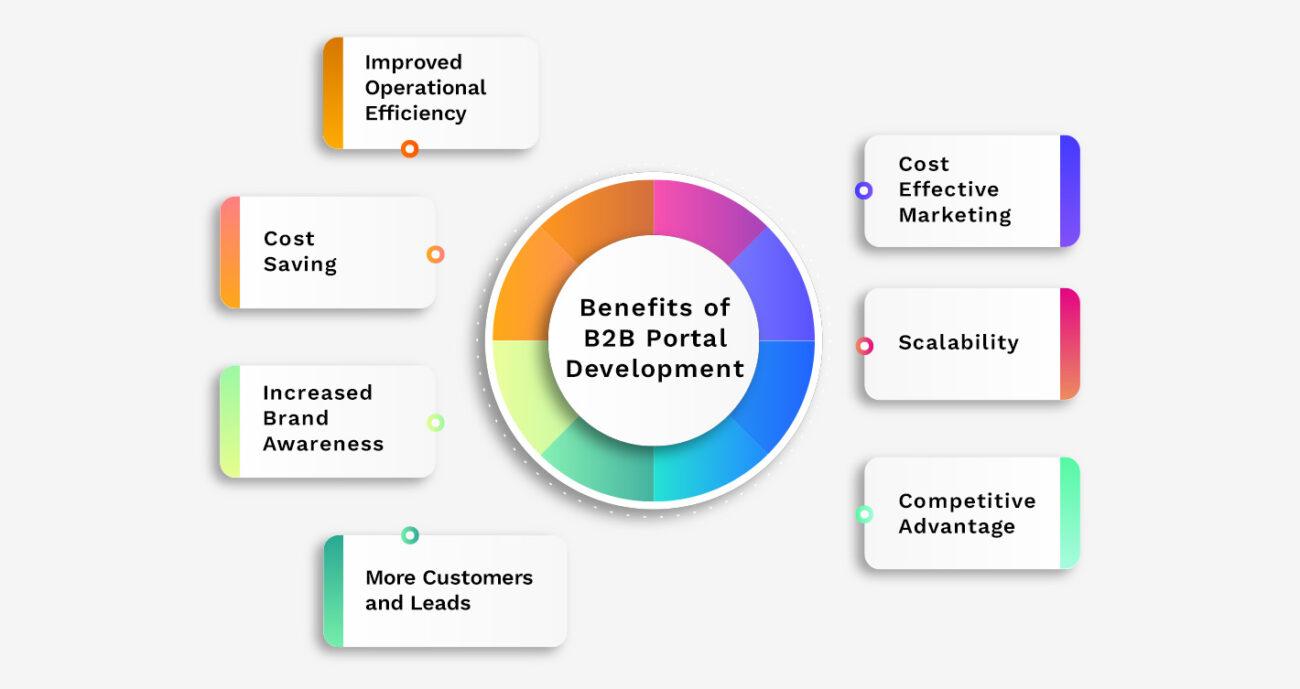
Top Features in B2B Portals
The key features make the portal easy to use and engaging for customers. They focus on user experience, leading to happier customers and smoother interactions. Some essential B2B portal features can change how your business works.
Customizable Dashboard
Customizable dashboards let users adjust their experience to fit their needs. This flexibility increases user engagement, helping stakeholders focus on important data. Users can make quick, informed decisions with key insights and metrics upfront.
Safe Payment Processing
B2B portals need to offer various payment options and ensure top security. This builds client trust, encourages purchases, and reduces financial risks.
Client Support & Self-Service
B2B portals greatly benefit from detailed self-service options. Tools like live chat and knowledge bases help clients solve problems on their own, increasing satisfaction and reducing support needs.
Instant Communication
Real-time communication tools are vital in B2B deals. Instant messaging helps solve issues quickly and keeps communication clear between buyers and sellers. It makes relationships more productive and simplifies the buying process.
Smart Automation
Smart automation in B2B portals makes tasks like order tracking and inventory management easier. Automating these tasks reduces errors and saves time. It increases productivity and lets teams focus on strategic efforts.
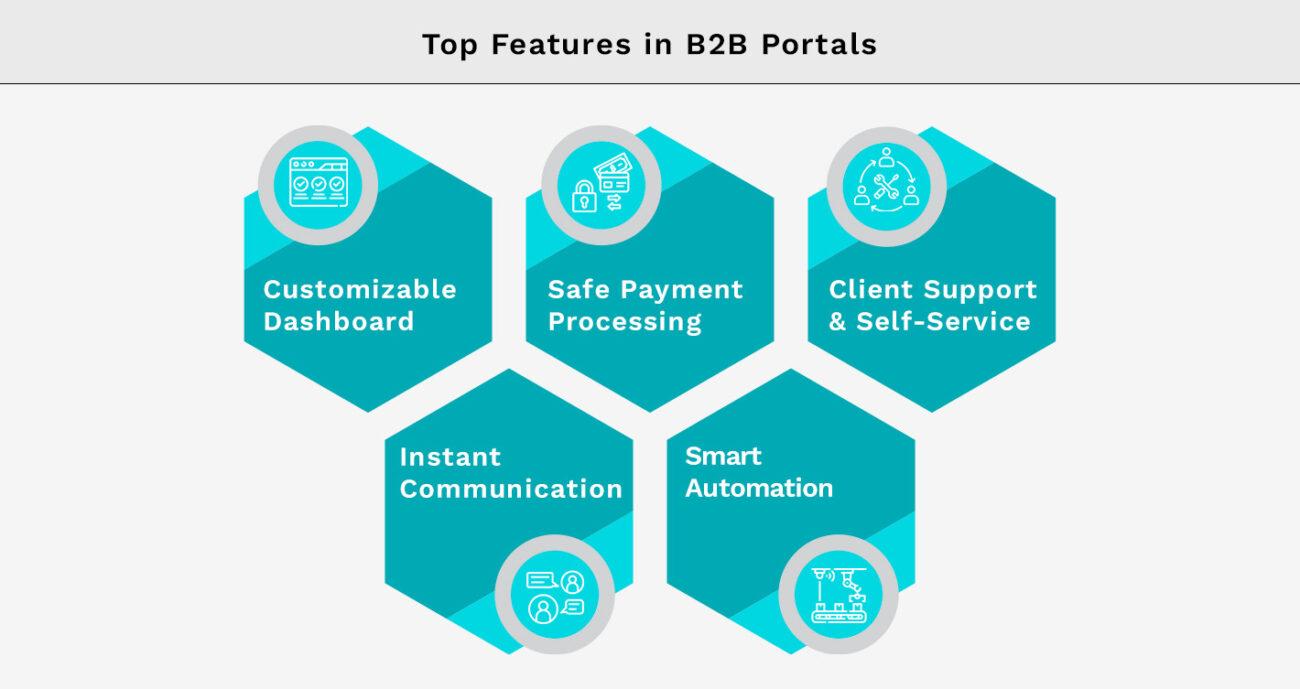
Step-by-Step Guide for B2B Portal Development
A clear plan is needed to create a successful B2B portal. This guide will show you how to make a platform that meets your customers' needs. It also focuses on keeping a strong user experience.
Identify Your Goals and Objectives
Determine your goals for your B2B portal. Do you want to improve customer engagement, increase sales, or streamline operations? Knowing your goals will help guide the whole development process.
Select the Appropriate Platform
Picking the right platform ensures growth and compatibility with other systems. Look at different options based on your business needs and products. Ensure the platform works well with your database, like PostgreSQL, for effective data management.
Prioritize User Experience Design
Ensure your portal is easy to use and looks good on all devices. Focus on user experience to keep customers happy and ensure your portal's success.
Incorporate Key Features
Add important features like secure payments, a customizable product catalog, and strong client support. These features improve user engagement and build trust with your customers.
Build and Test
Get professional developers to build your portal and test it often. This step is important to ensure everything works right and meets your and your customers' expectations.
Continuously Monitor and Optimize
After launching, use analytics tools to monitor your portal's performance. Regular checks help you make improvements. This keeps your portal up-to-date with user needs and business goals, making it more efficient and effective.
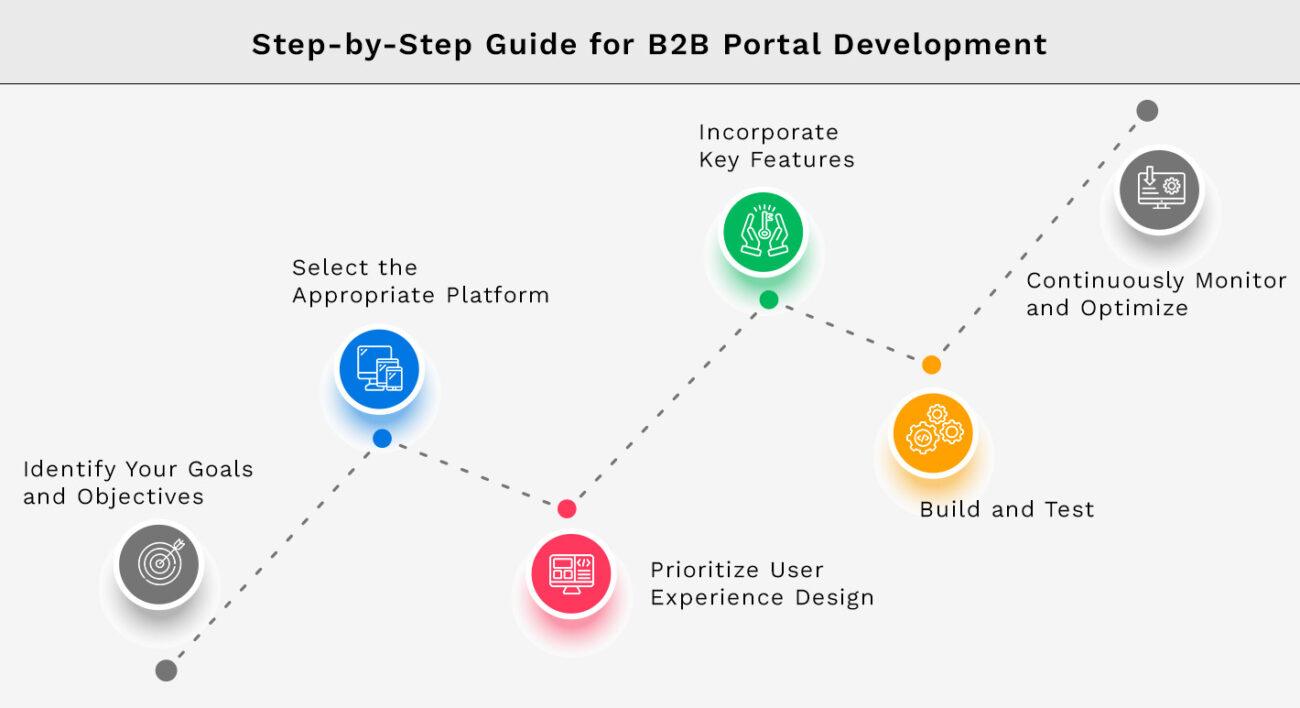
Common Challenges in B2B Portal Development and Strategies to Address Them
Starting a B2B portal project can be exciting but comes with its own set of challenges. Knowing these helps you plan better, ensuring your project runs smoothly and meets its goals.
Integration Complexity
One big challenge is dealing with integration complexity. Combining systems like CRM and ERP can be tough. Working with skilled developers can make this easier and more efficient.
Promoting User Adoption
To get users to adopt your portal, you need a solid plan. Offer good training and show how the portal benefits them.
Addressing Security Concerns
Security is a major concern in B2B portal development. Use strong encryption and follow data privacy laws like GDPR to keep your data safe and build trust with your users.
Scalability Challenges
Think about scalability from the start. Designing for growth helps avoid problems as your business grows. Focusing on scalability is important for long-term success.
Maintaining Performance and Speed
Regular updates and monitoring help keep users happy and ensure you manage your project well.
Customizing to Fit Unique Business Requirements
Customizing your portal can be difficult but necessary. Tailoring it to your industry makes it more useful, which is a big part of overcoming development challenges.
Managing Costs
Keeping costs under control is vital. Plan your budget carefully to avoid overspending. This will ensure that your project stays within budget and is highly quality.
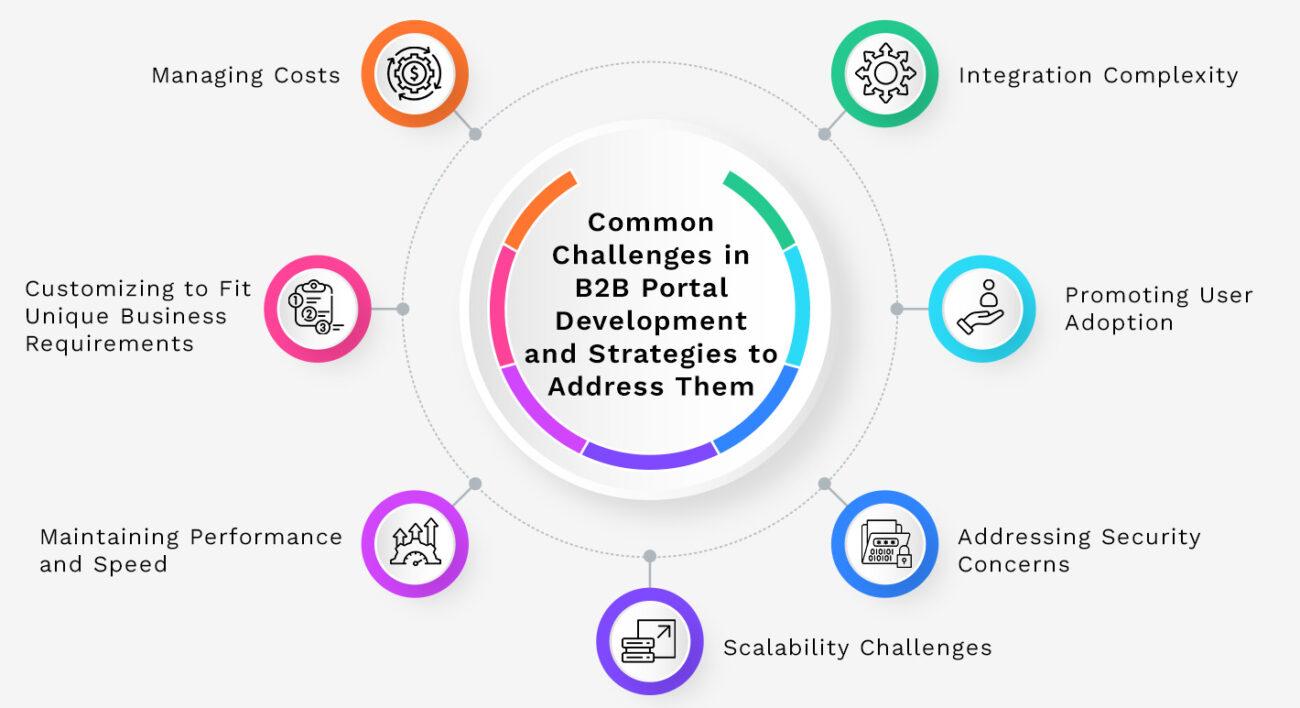
Build a B2B Portal with Kohezion
Creating a successful B2B portal starts with knowing your business needs and clients' expectations. Kohezion offers custom solutions for your specific needs. With the rise of B2B marketplaces, a good portal can put you ahead of rivals.
Kohezion's team knows how to link your new portal with systems like ERPs and CRMs. This makes your portal work smoothly and keeps workflows simple. Your clients will enjoy a better interface, making their transactions easier and faster.
Using Kohezion’s B2B portal development services lets you create a platform that draws in customers and builds trust. Self-service options in a B2B customer portal cut down on work, letting you focus on building strong client relationships. This leads to happier customers, better retention, and more revenue.
In a world where trust and user experience matter most, Kohezion is a top choice for B2B needs. Their focus on custom solutions helps your business succeed in a competitive market.
Conclusion
Integrating B2B portals into your business is a smart move. It increases your efficiency and visibility in the market. As companies aim for digital growth, having strong B2B portals is key. They help with better communication, order handling, and user interaction.
The B2B e-commerce market is growing fast. This shows how important these portals are for meeting client needs.
When building your B2B portal, make it easy to use. Features like customizable dashboards and secure login are essential. They help your business run smoothly and build trust with customers.
Also, having good reporting and analytics tools is vital. They let you track sales and inventory levels, helping you make smart business decisions.
If you're ready to integrate a B2B portal into your business, contact us today to learn how Kohezion can help you create a tailored solution that meets your specific needs.
Start building with a free account
Frequently Asked Questions
The time it takes to develop a B2B portal can vary greatly depending on its complexity and the features needed. Generally, a basic portal might take a few months to develop, while more complex systems with advanced integrations could take six months or longer. Factors like the development team's experience and the clarity of your requirements also influence the timeline.
Key stakeholders should include business leaders, IT professionals, and end-users from various departments. Involving different teams ensures that the portal meets the needs of all users and aligns with business goals. Input from external partners can also provide valuable insights into the most important features and functionalities.
Common technologies include web development frameworks like React, Angular, or Vue.js for the front end and Node.js, .NET, or Java for the back end. Database systems like MySQL or MongoDB are often used to manage data. Choose technologies that can scale and integrate easily with other business systems.
Track key performance indicators (KPIs) such as user engagement, transaction volume, and time saved on processes to measure the success of your B2B portal. Regularly collecting user feedback can also provide insights into how well the portal meets their needs. Analyzing these metrics over time will help you determine the portal's effectiveness and areas for improvement.
